It became the target for cartoonists, who took full advantage of all possible ludicrous situations, but this in no way lessened its popularity. Metallic points hang from yellow silk ribbons that would have enabled the hose to be tied to the doublet. 16501700 in Western European fashion - Wikipedia Madrid: Ediciones Ejrcito, pp. Edward VI (1537-53), ca. Only in the 1890s did the skirt return to a relatively slender silhouette, but there was no letup in the constrictive corset, which was then at its most painful and harmful stage. After 1660 the jackboot, a shiny black leather boot large enough to pull over shoe or slipper, replaced the French falls; oxfords of black leather were worn by schoolchildren. To discover primary/period sources, explore the categories below. Anthonis Mor (1512-16-c. 1576) Joanna of Austria (1535-73). Accessed July 5, 2019. Source: The Met, Fig. Source: Wikipedia, Fig. The King of France in the 1550s, Henri II (Fig. A gentleman, perhaps of the West family, shows these fashions in a ca. The arquebusiers and musketeers wore no armor other than the coleto and, at most, a gorget to protect the neck. 5 - Workshop of Franois Clouet (French, 1510-1572). 13). A member of FIT's History of Art department since 2015, Dr. De Young specializes in the intersection of art and fashion. 1555. Many of the latter still made their own clothes from homespun and woven fabrics, but the former could afford to import luxury fabrics and follow the fashion trends. 2) both still wear short gowns, but as well see the Spanish cape becomes the more popular piece of outerwear in the 1550s. In a portrait by Anthonis Mor (Fig. She has held fellowships at the Mets Costume Institute, the Museum of Fine Arts Boston, and Northwesterns Mary & Leigh Block Museum of Art. The queen and the English court eagerly copied the styles of the Spanish entourage. (375-76). 1550. Tunic (Uncu), c. 17th century. WebAs Habsburg Spain grew in power, Spanish fashions such as Spanish capes, corsets, and farthingales became popular all over Western Europe. Read on to take a trip down lane of Spanish history with me, to witness the growth and evolution of Spanish fashion from middle age to the 21st century. 11) wears a typical Spanish hairstyle, as the Royal Collection Trust notes: Joannas hairstyle, which is frizzed and set on the sides of the head beneath her masculine style bonnet, is distinctively Spanish and was known as toca de cabos. The continuing adoption of menswear style elements continues trends wed seen in the 1540s. 10 - Franois Clouet (French, 1510-1572). Through creativity, innovation, and competitiveness, be it haute couture from Balenciaga or casual wear from Zara, Spanish fashion is renowned and desired. 3 - Jooris van der Straeten (Netherlandish, active 1527-1598). 17th Century Spanish 1550-1559 | Fashion History Timeline The narrow-cut jerkin is covered all over by punched decoration, as the Museum of London explains: This youths dark brown leather jerkin (a type of jacket) is decorated with vertical and diagonal scored bands and diamond, heart and star pinking. For example, the earliest settlers, the Spanish, arrived in Florida in 1565. Source: Prado, Fig. The technical advances and the capability for mass manufacturing that had been brought about by the Industrial Revolution were making fashionable dress available to a rapidly expanding public. Royal Collection Trust, RCIN 403953. He studied the works of Francisco de Zurbarn, and Francisco de Goya to reinvent Spanish fashion and create his primary collection in 1936. Hose, which generally became longer, were fastened to the trunk hose (upper stocks) and made of knitted silk instead of tailored cloth. (235). Gabrielle Coco Chanel was one of the 20th centurys most influential fashion designers and she revolutionized womens fashion. Hair was dressed in Classical fashion, usually in a chignon bound with ribbons. 1 - Titian (Venetian, 1488-1576). Source: RCT, Fig. Since the reign of Louis XI, France had been trying to become less dependent on Italian silk imports. Philips style would go on to have a strong influence on other European courts, as well see below. 16. London: Tate, T00606. It was now a loose jacket with free-hanging sleeves. A deep waist sash, the kuak, bound the body over the junction between trouser and shirt. 3). Philip II of Spain, ca. She can be found @i.am.prerna on Instagram. Jerkin, ca. There, as well as in their later settlements in Texas and California, the climate was not very different from that of Spain, so that the colonists continued to wear Spanish styles. The dress for women in the Ottoman Empire was very similar to that worn by Muslim women in the Middle East. When we think of Spain and art, the first thing that comes to our mind is probably flamenco dancers or architecture like the famous Sagrada Familia by Gaudi. Stockings were either knitted or cut from woven cloth and sewn to fit the leg. The century opened inauspiciously with 1. three abdications in the same year, 1808 (Charles IV twice, and Ferdinand VII once), 2. the beginning of a vicious war against an invader (Napoleon and his troops 1808-14), in which Spanish, French and Anglo-Portuguese troops criss-crossed the country, and 3. a French king imposed Prior to working as a Fashion Journalism Intern at ShilpaAhuja.com, she started her career as a Travel Writer and Digital Marketer, where she wrote for different spheres like medical services, film review, information technology, and real estate. Privacy Policy (function (w,d) {var loader = function () {var s = d.createElement("script"), tag = d.getElementsByTagName("script")[0]; s.src="https://cdn.iubenda.com/iubenda.js"; tag.parentNode.insertBefore(s,tag);}; if(w.addEventListener){w.addEventListener("load", loader, false);}else if(w.attachEvent){w.attachEvent("onload", loader);}else{w.onload = loader;}})(window, document); The Fashion History Timeline is a project by FITs History of Art Department. In an equestrian portrait (Fig. 1552-54. Mens dress slowly became stereotyped, etiquette having laid down detailed regulations for the attire to be worn for different occasions, for different times of day, and by the various social classes. In Irvings history, the Knickerbockers were a family of Dutch settlers in 17th-century New Amsterdam who were depicted in George Cruikshanks illustrations for the book wearing the fuller style of breeches. Farthingales were bell-shaped Contact us! Or a newly digitized periodical/book to announce? Cambridge: Fitzwilliam Museum, PD.1-1963. (2020):Los tercios. Since the 1500s, the culture and customs of this diverse country have influenced Spanish fashion. He was also Duke of Milan. It is fastened with decorative pewter buttons that imitate buttons made from worked silk or gilt thread over a wooden core. New York: Putnam. In the 1610s women wore doublets and broad-brimmed hats, both of which were considered to be very masculine items of clothing. Watt, Melinda. Accessed July 5, 2019. Corsets became less restrictive or were abandoned. Source: RCT, Fig. Pinterest. Square Pointed Shoes. The black dress has large rolls at the shoulder and is clearly fur-lined as the regular openings reveal tufts of white fur. Portrait of Maria de' Medici, 1553. WebMay 27, 2014 - Explore Nicolin Bray's board "16th Century Spanish Clothing", followed by 354 people on Pinterest. Parisian designs of garments and accessories were publicized throughout Europe and America by fashion plates and journals. Source: Prado, Fig. Army officers of the United Provinces portrayed around 1611 by Jan van Ravensteyn (1572-1657), Mauritshuis, The Hague. North America was colonized by settlers from northern and western Europe. Oil on panel; 107 x 84 cm. Source: Royal Collection Trust, Fig. Portrait of an Unknown Lady, 1557. Spanish fashion was ascendant in the 1550s, from the loose womens gownthe ropaand the Spanish farthingale in womens dress to the narrow-cut jerkins and tight sleeves of Philip II and the must-have mens outerwear piece, the Spanish cape. In 1453, Constantinople itself fell to the Turks. WebBaroque dress 17th century clothing. It would come to confirm the appearance of the officiality in the pictures of Pieter Snayers. In the 1690s, complex top-knot hairstyles, incorporating large quantities of ribbons, were all the rage. Philip II, 1549-50. Chanel also worked with Salvador Dali, the father of surrealism. Oil on wood; 75 x 57.5 cm (29.5 x 22.6 in). Spain embraces a range of regional identities owing to climate, geography, and language differences. The pikemen, on the other hand, still conserved the essential component of the infant half armor typical of the second half of the 16th century, known as the coselete. 8). Thtre de tous les peuples et nations de la terre avec leurs habits et ornemens divers, tant anciens que modernes, 16th century. They were covered with wide-brimmed felt hats often decorated with feathers. century Spanish 3 - Bronzino (Florentine, 1503-1572). 9 - Titian (Venetian, 1488-1576). Along with these, designer Spanish brands like Paco Rabanne, Carolina Herrera, Manolo Blahnik, and Miguel Adrover have all left their imprint on the international fashion landscape. Fashion dolls and costume plates now reached America, and it was possible to be au courant with the latest modes. It fell out of fashion in the 18th Century, but the We can truly witness the influence and reflection of Spanish painter Salvador Dalis surrealistic style in designer Elsa Schiaparellis works. Daggers are less frequently seen than previously. Cambridge University Press (www.cambridge.org) is the publishing division of the University of Cambridge, one of the worlds leading research institutions and winner of 81 Nobel Prizes. Her dress conforms to the same rigid silhouette seen at the English court based on the Spanish farthingale and the beginnings of corsetry, as Millia Davenport explains in The Book of Costume (1948), writing that her: gown is of black velvet, embroidered with gold and lines of pearls, set with sapphires at their intersections; the underdress of pink satin. 1550-1559 Portraits of Women, 1550s. Catherine introduced and popularised the wearing of hoop skirts (a type of farthingale that gave dresses a wider shape) and Spanish blackwork lace in England. Her work has been generously supported by grants and fellowships from the Metropolitan Museum of Art, Getty, Kress and Mellon Foundations. Both men and women wore a steeple hat of felt or the more expensive beaver. Other popular beard styles included the imperial, a small goatee named for Napoleon III, and the side-whiskers and drooping mustache known as the Franz Joseph in honour of the head of the Austro-Hungarian Empire. 1). Neither wears a helmet, but we do observe some lobster among the accessories, from which we can deduce that the most complete armor, as well as heavier helmets and closed burgonets, more bulky, were relegated, from the end of the 1630s, to mere aesthetic ornaments for portraits. Oil on canvas; 106.1 x 77.4 cm. Sometimes the steeple hat was worn on top of the hood. Hampton Court Palace, RCIN 405751. The outfit, consisting of a jacket and knee-length skirt worn over Turkish-style trousers, was regarded as immodest and unfeminine. There is no visible codpiece; indeed the codpiece will diminish in size and eventually disappear in the second half of the 16th century. detail that decodes a masterpiece 1). Baurenschinderischer Warter Hansen Unehrlicher Anfang Gefaehrlichster Fortgang und allerschaendlichster Ausgang (1622), anonymous engraving, Germanisches Nationalmuseum, Nuremberg. 9), where the sleeves are instead lined with ermine (note the tails). While the bodice is rigid, the skirt falls in gentle folds suggesting she is not wearing the Spanish farthingale favored elsewhere, with volume instead created by pleats at the waistline as in the red velvet dress. Contini Bonacossi no. Vincent, Susan J., and Elizabeth Currie, eds. Khan Academy Early French settlers made their own fabrics and clothes and bartered with indigenous peoples for animal skins and pelts, with beaver predominating in Canada and deer in Louisiana. 3 - Hans Eworth (Flemish, 1520-1574). Probably the greatest change in clothing in America, as opposed to Europe, took place in the everyday working costume, with the Americans wearing heavier and warmer clothing made of stronger and stouter materials. The Ottoman Empire extended its control westward in Europe over the Balkans and as far as Hungary, where masculine dress was strongly influenced by Turkish styles. (1972): Military Fashion: A Comparative History of the Uniforms of the Great Armies from the 17th Century to the First World War. Join us on a journey through the world of Spanish fashion, where we discuss every major style from 1500s to 2020s, from historic flamenco to modern flared! His white shirt is very high-necked and ends in a prominent frill. Madrid: Museo del Prado, P000452. Portrait of a Lady, perhaps Contessa Lucia Albani Avogadro, ca. Many of these journals are the leading academic publications in their fields and together they form one of the most valuable and comprehensive bodies of research available today. It is because of the countrys internal make-up. 2448. 6-7). During the nineteenth century, Spain became more automated, yet skills like embroidery and leatherwork have remained valuable handicrafts to this day. It was only briefly fashionable in France, where a padded roll or French farthingale (called in England a bum roll) held the skirts out in a rounded shape at the waist, falling in soft folds to the floor. Portrait of Catherine de' Medici (1519-1589), 1559. The influence of national features in dress had been declining since about 1675 and by 1800 had become negligible; from then on fashionable dress design was international. The same can be said of the paintings of the genre of the guard rooms captured by Flemish and Dutch artists such as David Teniers the Younger, Cornelis Mahu, Jan Baptist Tijssens the Younger, Gerard ter Borch, Gillis van Tilborgh, Anthonie Palamedesz and Franois Duchatel, among others. The Seventeenth Century - Fashion, Costume, and Culture: spanish (1993), La uniformidad y las banderas, en VV.AA. The bowler, also known by such other names as the colloquial British billycock and, in America, the derby, was introduced about 1850 by the hatter William Bowler. For daywear, tailcoats of various types were worn with a waistcoat and the new looser style of trousers over boots. Although only the rich could afford designer fashions, the styles gradually reached the ready-to-wear market (in a modified form that nonetheless prompted the introduction of new fashions for the upper classes), and haute couture came to lead womens fashions. Produced by using only needle and thread, Burano lace was in high fashion during the 16th and 17th Centuries. Yellow silk yarn, knitted, fishbone, chessboard and striped patterns; fastentings: yellow silk; inner hose: yellow taffeta; hose lining: goatskin. Source: NGA. He also wears knee-high leather boots, another Spanish trend, as Hill explains: High-quality leather riding boots that extended to the knees and even mid-thigh were adopted by elite classes from the Spanish during the 1540s. (375). 3 - Anthonis Mor (Netherlandish, 1516-1576). It was greeted with horror and disdain, and the idea quickly died. Pisa: Museo di Palazzo Reale. In the latter half of the 16th and the beginning of the 17th-century, Spanish elite wore silk clothing that was vividly colored and embroidered, brocaded, or WebIn Spain, the cone-shaped Spanish farthingale remained in fashion into the early 17th century. Source: Uffizi, Fig. Maximillian II, the Holy Roman Emperor and cousin of Philip II, shows the latest trends at his court in a 1550 portrait by Anthonis Mor (Fig. For the 1660s and beyond, we had the meticulous paintings of Adam Frans van der Maulen Snayers most outstanding disciple, in the service of Louis XIV, Lambert de Hondt the Younger and Pieter Wouwerman. Many Virginia colonists leaned toward the Cavalier; Puritan ideas prevailed in Massachusetts. Omnium Pene Europae, Asiae, Aphricae, Atque Americae Gentium Habitus. Biblioteca Digital Hispnica, 1581. Most people made their own clothes, cultivating flax and cotton and raising sheep for wool. The Puritan penchant for simpler dress had begun before their departure for America. 10) again shows her wearing a French hood, but this time with a low-cut bodice with the neckline filled in by a jeweled partlet that ends in a ruffled collar edged in red embroidery. Fig. Originally from Kolkata, Prerna loves staying up to date in current fashion and culture trends, be it movies, music, or social media. fascinating facts in the history of Venetian fashion His golden trunk hose are paned and reveal a white satin lining. If you have suggestions or corrections, pleasecontact us. She also has a PG Diploma in Media and Public Relations from St. Xaviers College. The first assumption led to the definitive disappearance of the greguescos, who in the 1620s began to give way to narrower pants, fitted to the thigh. Many colonists thought it important to preserve class distinctions in all areas. Beginning in the 1630s, transformations took place thanks to the increasing influence of French fashion and the tactical transformations unleashed by Gustav II Adolphe of Sweden. Widener Collection. The Romantic age of the 1830s brought back more colour, a tighter waistline at a more natural level, fuller skirts, leg-of-mutton sleeves, and complex high coiffures surmounted by large-brimmed hats or bonnets. Century. Overview It often had double funnel sleeves, one part of which could be worn hanging, in accordance with a purely Spanish tradition. (227). Emperor Maximilian II, 1550. Fig. Throughout the 19th century cosmetics were worn mostly by actresses, and rarely if ever by respectable women. Consistent with this mission, the Timelines written commentary, research, and analysis provided by FIT students, faculty, and other members of the community is licensed under a Creative Commons Attribution-NonCommercial-ShareAlike 4.0 International License. Royal Collection Trust, RCIN 406044. Della Casa, Giovanni, and Nicholas Fitzherbert. The Spanish colonies first produced exotic dyes, which delivered bright reds and the deepest blacks, colors that still define the Spanish palette in religious, regional, and fashionable apparel, beginning in the sixteenth century. 11) it was also a status symbol as rich black cloth was expensive to produce and maintain. Zayas and Her Sisters, 2: Essays on Novelas by 17th Century Spanish Women: 9781586840976 - AbeBooks 5). Both men and women wore stout leather shoes with medium heels. 1550-60. Long sleeves were worn with deep cuffs to match the ruff Another interesting example is found in the Jos de Pellicers Avisos (Notices), when in 1644 Felipe IV dressed as a soldier on the occasion of the visit to the headquarters and parade ground of the Army of Catalonia, in Fraga. Florence: Uffizi Gallery, Inv. 6 - Workshop of Franois Clouet (French, 1510-1572). The codpiece remains prominent. Minneapolis Institute of Art, 87.6. Brummell was so concerned with fit that he had his coat made by one tailor, his waistcoat by another, and his breeches by a third. The sleeves of the gown are also very regularly slashed in a vertical line (Fig. In America, as in England, plain dress and rich dress became, in effect, the respective symbols of the Puritan and the Cavalier, respectively. London: Victoria & Albert Museum, P.26-1954. Until well into the 18th century men in these non-Muslim areas wore the dolman over the mente (both are styles of caftan), together with trousers, boots, and a fur-trimmed hat known as the kucsma. This view can be extended to soldiers of all European nations, and is ironically reflected in an engraving published in Strasbourg in 1622 and titled The Dishonest Beginning, the Dangerous Progression, and the Shameful End of Construction Worker Hansen, showing how a soldiers clothing becomes more ostentatious as he kneads loot, but only to end up irretrievably reduced to rags by the harshness of the campaigns. A Thrilling Journey through The Spanish Fashion History Mollo, J. French colonists, like the Dutch, were assisted by their home government with provisions and equipment to found settlements. Unless specifically noted, images used in the Timeline are not subject to this Creative Commons License applied to the written work from the Timeline. 9) shows that more colorful dress was still seen. Womens clothes were at the center of political debate in the Spain of Philip IV (r. 162165), and no garment inspired more controversy than the wide-hipped farthingale, or hoopskirt, known as the guardainfante. Cambridge Journals publishes over 250 peer-reviewed academic journals across a wide range of subject areas, in print and online. This picture shows square toed shoes worn by the explorer Walter Raleigh. fashion The 14th century saw the elite and aristocrats supplementing their wardrobes from abroad to keep up with the changing styles. This was a flexible steel framework joined by tapes and having no covering fabric. Fig. Their collection includes shirts, tops, jeans, and party wear. In general, non-religious art enjoyed widespread consumption among the Viceroyalty of Perus diverse populace. WebThe century began with power in Europe fairly evenly distributed between France, England, and Spain, but that balance would soon end. In the first two decades of the century, clothing and equipment hardly deviated from the fashion of the late sixteenth century. Ashelford notes that this was a common decorative choice: Contrasting the dark material of the gown with a soft fur lining was a fashion that appears in many portraits of the 1550s and 1560s (59). From the previous years, lobster helmet, imported from Hungary, became popular. Read next: Japanese Fashion: A Journey from Ancient to Modern. While her hair is worn up, without any additional hat or hood, Joanna of Austria (Fig. Boucher summarizes the key transformations in menswear in this period: from 1540 to 1575, male costume underwent a slow transformation, borrowing details from Flemish and Spanish fashion, while Italian influence decreased The chamarre was replaced by the Spanish cape.
Portland Oregon Crime Rate Ranking,
Is There A Stomach Bug Going Around Houston 2021,
Drake's House Toronto Google Maps,
Best Place To Sell Silver Near Me,
Articles OTHER

















